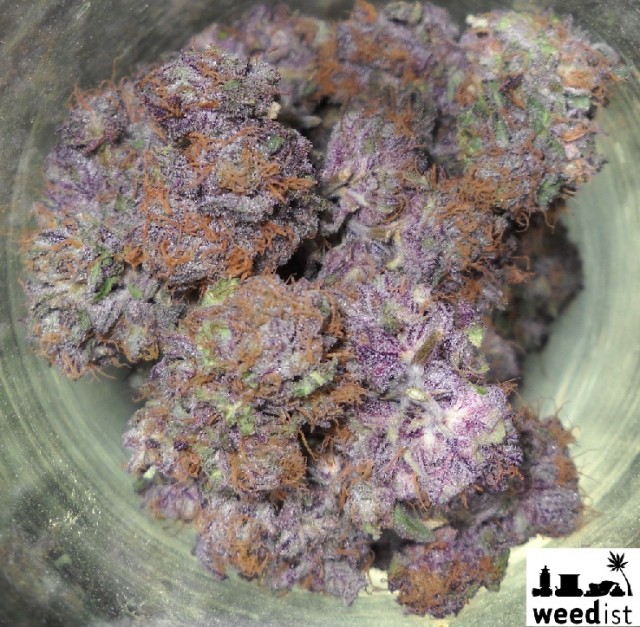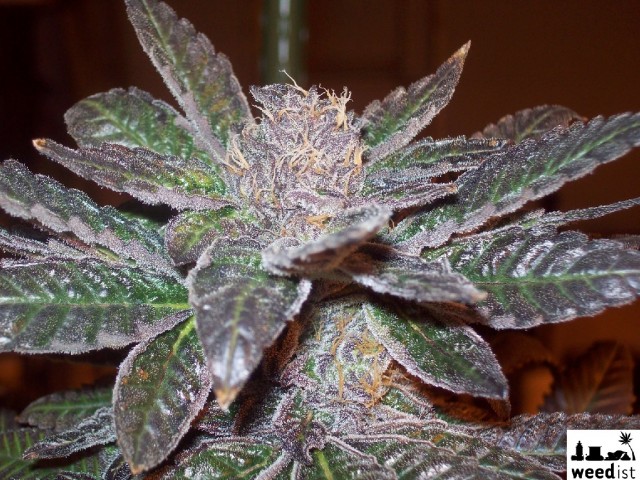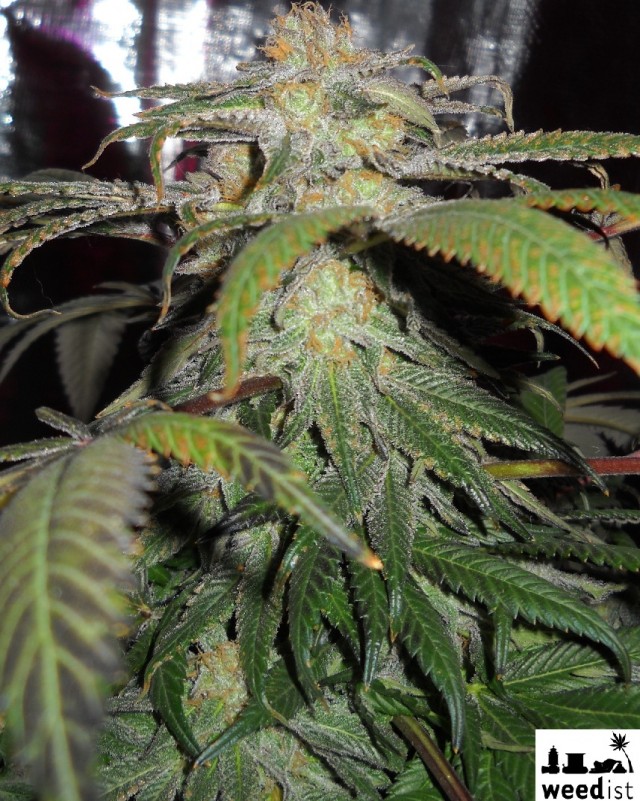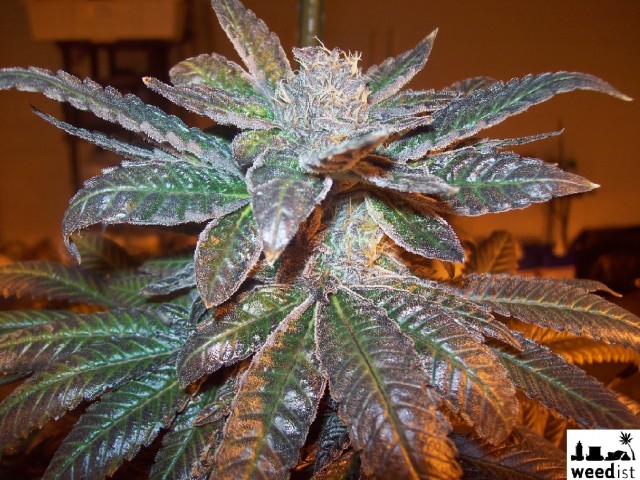
Jar full of organic, fully mature, Grape Ape. Grown and photographed by Denver Green Beaker.
One of my favorite strains, Grape Ape, is excellent medicine for those who prefer the mellow high of an indica, and it is a true pleasure for any grower.
Grape Ape is a hybrid plant (about 90% indica) consisting of mainly Afghani genetics, selectively bred for its incredible purple color and grape flavor. The presence of sativa genetics is only mildly apparent to the smoker, though it is somewhat more obvious to the grower.
The high of Grape Ape is very relaxing and relieving, but more clear-headed than pure indica strains, allowing one to relax without immediately getting drowsy. This characteristic makes the strain much more desirable than a pure indica for many smokers, including myself.

Perfectly matured Grape Ape. I love the look of these plants.
I keep indica dominant hybrids like Grape Ape around instead of pure indicas. It takes longer, but the smoke is well worth it.
For the grower, Grape Ape looks almost like a pure indica; growth pattern, bud shape and size are identical to an indica, (even larger and more densely packed than many pure indicas) except that the leaves are slightly thinner. The obvious difference between growing Grape Ape and a similar pure indica (Afghani) is flowering time.
While Afghani and most other pure indicas need eight weeks or less to flower, Grape Ape requires almost ten weeks to completely mature. Please keep this in mind if you grow Grape Ape, and also note that these times are for organic soil grows; chemical hydroponic grows will finish about 10% faster and be similar in color, but with a slightly different and less powerful flavor.
Many dispensaries here in Colorado have Grape Ape available, but the quality is often sub-par. This is because unless you know that you need to wait longer, it is easy to think that these plants are ready to harvest after eight weeks of flowering. By the end of the eighth week, Grape Ape plants have full-sized colas with bright orange hairs that are covered in glistening white, apparently mature trichomes (AKA resin glands), and most of the leaves will have vivid purple spots, see photo below.

Grape Ape after 8 weeks of flowering. Grape Ape is commonly harvested at this stage, but still has two weeks until it’s fully mature.
What will be lacking at this time is color in the buds and flavor.
The plant will not appear to grow at all, but during the last two weeks of its life the calyxes will shift from green to purple, starting at the tops of each bud and slowly working toward the main stems. The trichomes will also change from white to a slightly bluish color.If harvest is delayed too long, the trichomes will turn brownish-orange.
Grape Ape is a heavy feeder, meaning it can handle a relatively high concentration of nutrients without being damaged. The plants produce best if grown without any kind of pruning or topping, which leads to pine tree shaped plants with enormous terminal (top) colas. Grape Ape works great in a Sea of Green setup because of this natural growth pattern.

Grape Ape just before harvest, after 68 days of flowering.
I can honestly say that Grape Ape is the most beautiful strain of cannabis that I have had the pleasure to grow, and I have even given up strains that have more desirable effects just to keep one of these beauties in my garden.
If you want to grow Grape Ape but cannot find it, a similar strain to try would be Next Generation’s ‘Grape God’.
There is apparently a company selling Grape Ape seeds on medicalseeds.com. I’ve never ordered from them before, so I cannot recommend them. If anyone has ordered from medicalseeds.com, please let us know about your experience.









